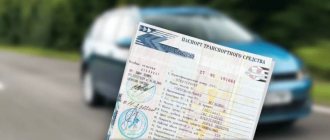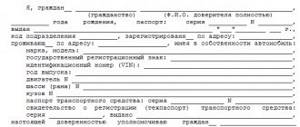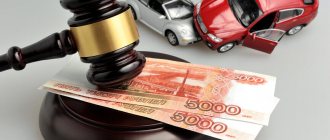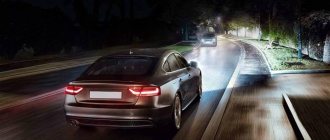Where is the best place to buy a used vehicle?
The most common method, which previously had no alternatives, is buying from hand. The buyer himself searches for a suitable car through advertisements, contacts the seller and negotiates the terms of the transaction. The main advantage of this option is the opportunity to bargain with the current owner of the car and slightly reduce its price. Read about the intricacies of trading and ways to save money when buying a car in this material.
However, there are also some disadvantages:
- When purchasing a car second hand, there is a high risk of its malfunction. During an external inspection, it may be difficult to notice certain defects, and many drivers do not consider it necessary to undergo a technical inspection before concluding a transaction.
- There is a risk of falling for scammers. A buyer who is not a car expert may not be able to identify problems with the car. It may be brought from abroad without the necessary customs formalities or be wanted. This can lead to serious problems with the law in the future.
Buying a used car at a dealership is safer for the buyer than buying it second hand. Any car that goes on sale at a dealership first undergoes a comprehensive diagnostic test. When certain defects are identified, they are immediately eliminated.
In addition, a thorough check of legal aspects is carried out. Car dealership specialists determine the place of production of the car, the number of its past owners, actual mileage, maintenance, and so on.
Buying a car from a dealership deprives the future owner of a number of troubles.
We talked in detail about buying a car in a showroom or from someone else here.
However, the price will likely be higher than if purchased from a private party. In practice, a better option is to buy a car from a dealership, albeit for several thousand more, but get peace of mind regarding the legality of the transaction and the serviceability of the car. Another advantage of this option is the opportunity to receive free warranty service from the seller’s service.
Risks when buying a used car from a dealership
The larger and more famous the salon, the less likely you are to encounter deception and unprofessionalism of managers. Large dealers are aimed at long-term business and fight for every client. Buying a used car in some centers is no different from buying a new one.
A small or newly opened car dealership may well offer a low-quality product. Unprofessional presentation of advantages, dishonesty in informing about defects and ownership history, and sometimes outright rudeness when determining the cost of a car are often encountered here.
But if you buy a used vehicle not at a dealership, but from resellers, then there are even more pitfalls, for example:
- overvaluation;
- broken numbers, hidden defects, twisted runs, etc.;
- cunningly drafted contracts;
- failure to fulfill obligations.
The most dangerous thing is that they all try not to answer for anything. One can only guess how much they charge for used cars. Therefore, you need to rely only on yourself, and carefully check the car, documents and contract, preferably with the help of experts.
What to pay attention to
We won’t tell you how to buy a used car. But let us explain what you should pay attention to.
- Study the documents for the car.
- Inspect the car from the outside. The paintwork must be the same color and shade, without visible transitions. Look for signs of rust. Check the markings on the windows, the width of the gaps, the tightness of the doors, hood, trunk and bumpers. Make sure the treads wear evenly.
- Open the hood and inspect the engine compartment. There shouldn't be any leaks here. Pay attention to dents, non-standard fastening of units and the presence of homemade devices.
- Check the operation of headlights, lamps and brake lights.
- Compare the mileage on the odometer with the specified seller, check the operation of electronics, instruments and ignition.
- Start the engine. The sound should be smooth and quiet, without knocking or twitching. Make sure the air conditioner, interior heater and wipers are working.
- Inspect the underbody for leaks, holes and corrosion.
- Take it for a test drive. Evaluate the performance of the engine, gearbox and suspension. Check handling, throttle response and braking. There should be no large rolls and skids in turns, knocking when driving over uneven surfaces, jerks when switching and overshoot/drop in engine speed.
You don't need to be a big expert, although his advice won't hurt. Listen to your feelings and evaluate the proposal as if from the outside. As a last resort, offer to stop at some station for diagnostics.
Pros and cons of purchasing from a showroom
Having decided to buy a used car at a car dealership, the buyer must evaluate the advantages and disadvantages of such a transaction. The advantages of this solution include:
- Checking the legal history of the car. Car dealerships care about their reputation and carefully select the cars that go on sale. The risks of purchasing a problem car are minimized.
- Diagnostics of a car before putting it up for sale. The qualifications of the official dealer's specialists should not be in doubt.
- Availability of guarantee. When making a purchase at a dealership, you can be sure that if significant problems are identified, the dealer will repair it or return the money.
Along with the advantages, there are also some negative aspects:
- It is unlikely that you will be allowed to test drive the car. This is due to the lack of insurance and the need to maintain odometer readings.
- It will also be difficult to conduct a detailed inspection of the machine. The dealer may not allow you to measure compression or remove spark plugs.
- Increased car price. Salons rarely reduce prices for used cars, which cannot be said about private sellers.
What is the difference between buying a used car at a car dealership and buying a new one?
Actually, there is no fundamental difference; the procedure for selling a used car is the same as for a new one. There are only much fewer showrooms selling used cars. In addition, there will be no guarantee if the factory one has expired or has fallen off. All stages of the transaction - car selection, testing, preparation, payment and registration - are identical. The client can also apply for a loan or buy a car for cash.
At the showroom, the car is checked for legal purity, after which a sales contract is drawn up for it. Next, payment is made and the keys are given to the client. This is a short scenario for buying a used car.
Purchasing methods
There are several ways to purchase a used car from a dealership.
In small salons
This option is one of the most undesirable. Typically, such organizations buy the cheapest cars with significant defects and sell them at a large markup. But in this case, the issue is not only about price. Repairs of such cars are carried out as cost-effectively as possible.
It is unlikely that anyone will spend significant funds on a car that will be sold in the future. This leads to possible technical problems in the future. It’s also not so simple with documents. Small showrooms and resellers usually do not register the car as their own.
Until the actual registration, the car remains in the possession of the previous owner. The reseller will try to avoid mentioning himself in the papers and sell the car with the signature of the previous owner under a fictitious contract.
This scheme usually works, and the new owner registers the car without any problems. However, in certain cases there are misunderstandings.
Let's say the old owner may get tired of waiting for the sale and cancel the registration of the car in his name. Then the new buyer will face serious problems when registering. But it will be almost impossible to get funds back from the reseller.
In general, buying a car from a reseller is a valid option. But before concluding a contract, it is important to carry out a detailed diagnosis of the car and require the seller to carry out the transaction on his own behalf, indicating the full price of the car in the documents.
In a relatively large center
In large salons, everything is much simpler with documents. Typically, the company enters into a vehicle commission agreement or an agreement for the provision of sales services with the owner.
Attention! In such agreements, a separate clause is discussed that the previous owner must not terminate the registration of the car, and also that he guarantees the absence of any claims to the car from third parties.
In such showrooms, the technical condition of the car is usually much better than in small companies and resellers. Large organizations are concerned about their own reputation and do not sell cars with significant defects.
But minor flaws that do not have a significant impact on the operation of the car, such as scratches, can be disguised so that the appearance of the car matches its price. The quality of such repairs also does not always meet the necessary requirements.
In addition, large showrooms provide the buyer with a guarantee on large parts and components of the machine. It, in essence, is a time to check the product, but in many ways protects the consumer from purchasing low-quality products.
Thus, you can buy a used car from a large dealership. For the future owner, this is a guaranteed legal purity of the car and protection from serious defects immediately after purchase. We talked about how to check the legal purity and technical condition of a car here.
But it is worth remembering that the salons do not have information about how the car was serviced and used, so no one can guarantee you that you will use it for a long time and without problems. In addition, prices in such companies can be significantly higher than in small salons.
According to the trade-in system
This is the safest option for buying a used car. According to this system, cars are handed over not because they are completely unfit for use, but to receive a discount on a new car. A mandatory requirement is that the vehicle being rented out does not have any serious problems and is ready for active use in the future.
It should be taken into account that showrooms that primarily sell new cars do not repair used ones. Cars are sold in the same condition as their previous owners. Accordingly, you will notice the existing defects immediately and can draw conclusions about whether it is advisable to buy a particular car.
Salons working with a trade-in system also usually offer reasonable prices, since their goal is prompt sales and compensation for losses incurred due to discounts.
Buying a car in small car dealerships such as “parking lots” or from a reseller
Perhaps the most undesirable course of action is to buy a car on an open market such as a “parking lot” or from private resellers. As a rule, such people and organizations buy very cheap cars that have significant technical problems, put them on the road and sell them at a draconian markup. However, the issue here is not only a high output price. The fact is that the repair of such cars is carried out in the most budgetary manner. No one will spend significant financial resources on a car that is being prepared for sale. Rotten areas of metal may not be welded, but covered with putty and painted over with anti-gravel, damaged seats are covered with the cheapest covers, additives can be added to the engine to temporarily reduce the smoke of a worn-out and faulty power unit.
As for documents, not everything is smooth here either. The fact is that resellers and small car dealerships do not register ownership of the car. Until registration, the vehicle remains formally registered in the name of the old owner. In this case, the reseller will try to avoid any mention of himself in the documents by selling the car under a fictitious contract with the signature of the old owner. In most cases, this scheme works, and the new buyer registers the car without any problems. However, in some cases, overlaps may occur. For example, tired of waiting for a sale, the old owner can simply cancel the registration of the car in his name. During registration of this vehicle, the buyer will have serious problems. But getting your money back from the reseller will be almost impossible.
As a conclusion, we can say that it is, in principle, possible to buy vehicles from outright resellers. However, before purchasing, it is necessary to conduct a thorough diagnosis of the car, and also require the seller to carry out the transaction on his own behalf, indicating the full cost of the car in the purchase and sale agreement.
How to buy a used car from an official dealer?
Buying a used car from an authorized dealer involves a certain sequence of actions.
Is it possible to check the car yourself?
Most often, it is impossible to conduct a full vehicle inspection. The buyer can only inspect the vehicle. When looking at a potential new car, it is important to pay attention to the following points:
- Appearance of the car. Inspect the body for abrasions, chips, and dents. Also evaluate the car’s paint job—highlights may indicate an accident history.
- Movable mechanisms. It is worth inspecting the doors, hood, trunk, etc.
- Compliance of numbers with the data specified in the PTS.
- Salon. Evaluate the covering, under which defects may be hidden.
- Odometer readings.
- Trunk. Estimate the distance from the body to the parts. There is no rust allowed inside the trunk.
Inspecting the machine will allow you to identify its weak points, which will be easier to deal with in the future. We wrote about the inspection, check and test drive of a car when buying a car here, and the intricacies of checking a gearbox when buying a car are described here.
What to pay attention to when signing a contract?
Before signing the purchase and sale agreement, it is important to study all its clauses and notes. This is necessary even if the document has already been provided by the manager for review, since it can exist in two copies - for inspection and for signature. The signature version may include edits that the buyer does not want.
According to the law “On the Protection of Consumer Rights”, the buyer can return the purchased car within 15 days after the transaction is concluded. Returns are possible if there is a clause about this in the contract.
We wrote here what to do after signing the purchase agreement.
What documents should I check?
When buying a used car at a dealership, you need to check the following documents:
- Certificate of deregistration of a car with the MREO. If it is missing, you need to request a document confirming that the car is not stolen.
- Service book. This document includes information about all work carried out on the machine. The data will help identify the weak points of the vehicle and pay attention to them in the future.
Read everything about buying a used car, including how to find a suitable vehicle and fill out the documents correctly, and learn about vehicle diagnostics before buying a used car here.
If you decide to purchase a car, then our useful articles on buying a car without license plates, using maternity capital, at an auction, transferring money during a transaction, purchasing a new car at a dealership, negotiations, and insurance when buying a car can help you.
Where to buy used cars
Before talking about the advantages or disadvantages of buying a used car at a dealership, it is worth clarifying where the sale of vehicles (vehicles) generally takes place. Today you can do this:
- at the car market;
- through the Internet;
- by acquaintance;
- from companies selling vehicle fleets;
- on the auction;
- in the penalty area;
- at a car showroom.
In the latter case, two options are offered:
- Commission sales.
- Trade-in program.
Looking at the secondary market?
The secondary market usually follows the same trends as the primary market (albeit with some delay). As statistics show, in July-August in Russia there was a surge in car purchase and sale transactions on the secondary market. This is quite logical - people’s incomes have fallen, some have lost their jobs, others are left without money. In this situation, selling your unused car can be a lifesaver. This is also interesting for the buyer - during a crisis, it is much more difficult to assemble a new car.
However, from the buyer's point of view, the secondary market is also not an ideal choice:
- preferential car loans are not available, and a regular one will be more expensive (since a used car is cheaper than a new one);
- the risk of falling into the hands of an unscrupulous seller;
- unknown exact technical condition of the car;
- due to a new increase in the number of coronavirus cases, there is a risk that it will be difficult to insure and re-register a car (since service stations, insurance companies and traffic police departments may be closed to visitors again).
As for the advantages of the secondary market, they are quite obvious, and the main advantage is the lower price
(although it all depends on the age of the car). Even on the secondary market, it can be easier to choose the right model and configuration (and the dealer has to choose from what is in stock or place an order and wait several months).
However, for many, a car has become a real salvation during the crisis - it is both a way to earn extra money (courier, taxi) and a way to travel out of town during the period of self-isolation. And in such a situation, it doesn’t matter at all whether the family’s car is new or used. Therefore, in a crisis, the best recommendation is to make a purchase solely according to your capabilities,
and don't forget about some mandatory expenses.
For example, when buying a new car
you need to set aside a certain amount for a minimum set of additional equipment, MTPL and TO-0.
When buying a used car,
you need to spend money on full diagnostics and replacement of consumables in the most important components.
State programs are good, but if they don’t go overboard
One of the key drivers of the new car market is government programs for preferential car loans. In fact, the state solves several problems at once - it helps automakers, the population, banks and even insurance companies (a Casco policy when buying a car on credit is a prerequisite almost everywhere).
Total programs 2:
- “First car” - any buyer-borrower who has not previously owned a car has the right to the benefit;
- “Family car” – a borrower who has minor children (at least one child) can buy a car at a discount.
a program for health workers was added
.
If the borrower meets these parameters, he can buy a car on credit and receive a discount on it in the amount of 10% of the cost (except in the regions of the Far East, where the discount will be 25%).
True, there are additional conditions:
- This is a regular car loan, so the car buyer must meet all the bank’s requirements for borrowers (income, work experience in the last place, etc.). True, a car loan assumes that the purchased car is pledged to the bank, so getting approval is not so difficult;
- the cost of the car is no more than 1.5 million rubles, and it must be new. A new car is if it is less than 1 year old and has never been registered with the owner;
- the car must be assembled in Russia, and not just assembled - there are certain requirements for manufacturers according to conditional localization points (that is, the car must not just be assembled in Russia, but, for example, the body must be stamped, welded and painted, or the engine must be produced within the country). Also a prerequisite is the presence of a special investment contract with the manufacturer;
- Not every bank works under the program; this needs to be clarified on site.
Most large car dealers indicate prices for cars with the mark “from...”, this means that a 10% discount under the state program will already be included in the price. This amount is not given to the buyer; it will be received by the car dealer from the bank, which, in turn, will receive compensation from the state.
Considering the cost restrictions of 1.5 million rubles, quite a lot of models fall under the program, and not only budget ones. For example, a Hyundai Creta, Renault Kaptur, or Kia Optima
– despite the fact that they fall under the criteria of state programs. And if the cost of a car with additional equipment turns out to be above 1.5 million rubles, then some car dealers are even ready to “split” the loan so that it goes through the program.
However, in practice there are already serious excesses. One of the tg channels reported that a number of AvtoVAZ dealers almost directly refuse to sell their cars to customers without credit - in order to select the required volume under government programs. Another example of unscrupulous behavior is that cars that are included in the program increase in price, and life insurance is imposed on customers. As a result, prices for the same Kia Seltos rose literally to the upper limit under the state program
.
As a result, the client receives a discount from the state, which in fact he does not see - it “dissolves” in an increase in car prices, compulsory and “imposed” insurance.










